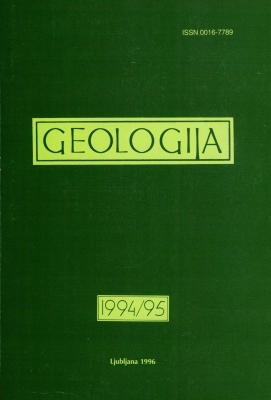Favnistični razvoj mehkužcev v cenomanijskem stratigrafskem zaporedju pri Vižovljah (Tržaški Kras, Italija)
DOI:
https://doi.org/10.5474/geologija.1995.003Povzetek
Stratigrafsko zaporedje plasti pri Vižovljah (Tržaški Kras) pripada spodnjemu delu »člena Col« (Membro di Colla), še neformalne in začasno določene »apnenčeve formacije Tržaškega Krasa«, ki ga štejemo v srednji do zgornji del cenomanijske stopnje. To zaporedje kaže na razvoj okolja na bolj ali manj omejenih območjih z bogato favno moluskov. Med moluski smo ugotovili šest radiolitidnih vrst (Radiolites carsicus n. sp., Radiolites peroni, Praeradiolites acutilamellosus n. sp., Praeradiolites cf. P. fleuriausus, Sauvagesia sharpei in Durania acuticostata n. sp. Od teh so bile tri vrste opisane kot nove (Radiolites carsicus n. sp., Praeradiolites acutilamellosus n. sp. in Durania acuticostata n. sp). Razen tega smo posvetili pozornost na zvezo med radiolitidi in spremembami okolja. Radiolitidi imajo različno stopnjo prilagodljivosti na spremembe okolja. Najbolj prilagodljivi radiolitidni vrsti sta Praeradiolites cf. P. fleuriausus in Sauvagesia sharpei, medtem ko so najmanj prilagodljive vrste Radiolites carsicus n. sp., Radiolites peroni, Praeradiolites acutilamellosus n. sp. in Durania acuticostata n. sp.Prenosi
Kako citirati
Caffau, M., Pugliese, N., & Pleničar, M. (1994). Favnistični razvoj mehkužcev v cenomanijskem stratigrafskem zaporedju pri Vižovljah (Tržaški Kras, Italija) . Geologija, 37(1), 87–121. https://doi.org/10.5474/geologija.1995.003
Številka
Rubrika
Članki

